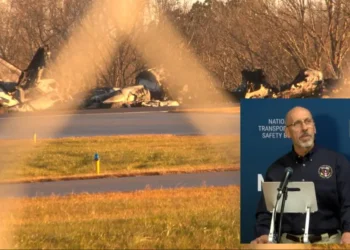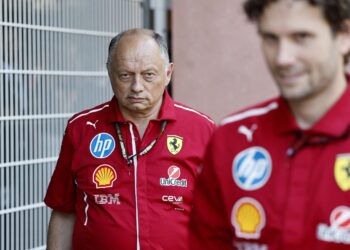George Russell, a British driver for Mercedes AMG F1, expressed concerns about the potential dangers of Formula 1 cars in 2026. According to Russell, the low aerodynamic pressure configuration of the cars on straightaways can make them “unstable” at high speeds. The preliminary regulations for the 2026 F1 season, which were revealed before the Canadian Grand Prix, include movable aerodynamics to conserve energy in hybrid power units. These regulations propose the use of movable elements on the front and rear wings, similar to the DRS system, to allow cars to reach higher top speeds. However, Russell believes that this could lead to an increase in risks on the track. He predicts that cars could reach speeds of up to 360 km/h on most tracks, which he considers impressive but also concerning. Russell raises the scenario of a race on a street circuit in the rain, where slick tires and high speeds can create a dangerous situation. As the director of the Grand Prix Drivers’ Association (GPDA), Russell prioritizes safety and emphasizes the importance of addressing potential risks before they occur. He acknowledges that the sport has historically been reactive rather than proactive when it comes to safety improvements. However, he praises the FIA for their awareness of the problem and their efforts to consider all possible scenarios.
“Only time will reveal the answer, but the vehicles are already incredibly fast as they currently are. Where do we draw the line? Are we aiming for speeds of up to 400 kilometers per hour? Do spectators really want or need that?”
In addition to safety concerns, Russell also discussed the impact that the 2026 regulations will have on the driving experience.
Both F1 and FIA are committed to increasing the excitement of races in the series, and a possible consequence of this is a potential decrease in the aerodynamic pressure generated by the new cars, resulting in lower cornering speeds.
Russell found himself torn between two perspectives when it came to the compromise between high aerodynamic pressure F1 cars and those capable of closer racing.
“From a driver’s point of view, you want the fastest cars possible, to feel like you’re flying a fighter jet. That’s how it was in 2020 and 2021, and now these cars are becoming incredibly agile again,” he expressed.
“It would be unfortunate to lose part of the car’s performance. However, on the other hand, reducing aerodynamic pressure and minimizing the effects of turbulent air would improve the quality of the races.
“You can’t have it all and you have to choose your battles. What do we really want to achieve?
“For me, the goal is to have intense and competitive races among all teams and all drivers.”










